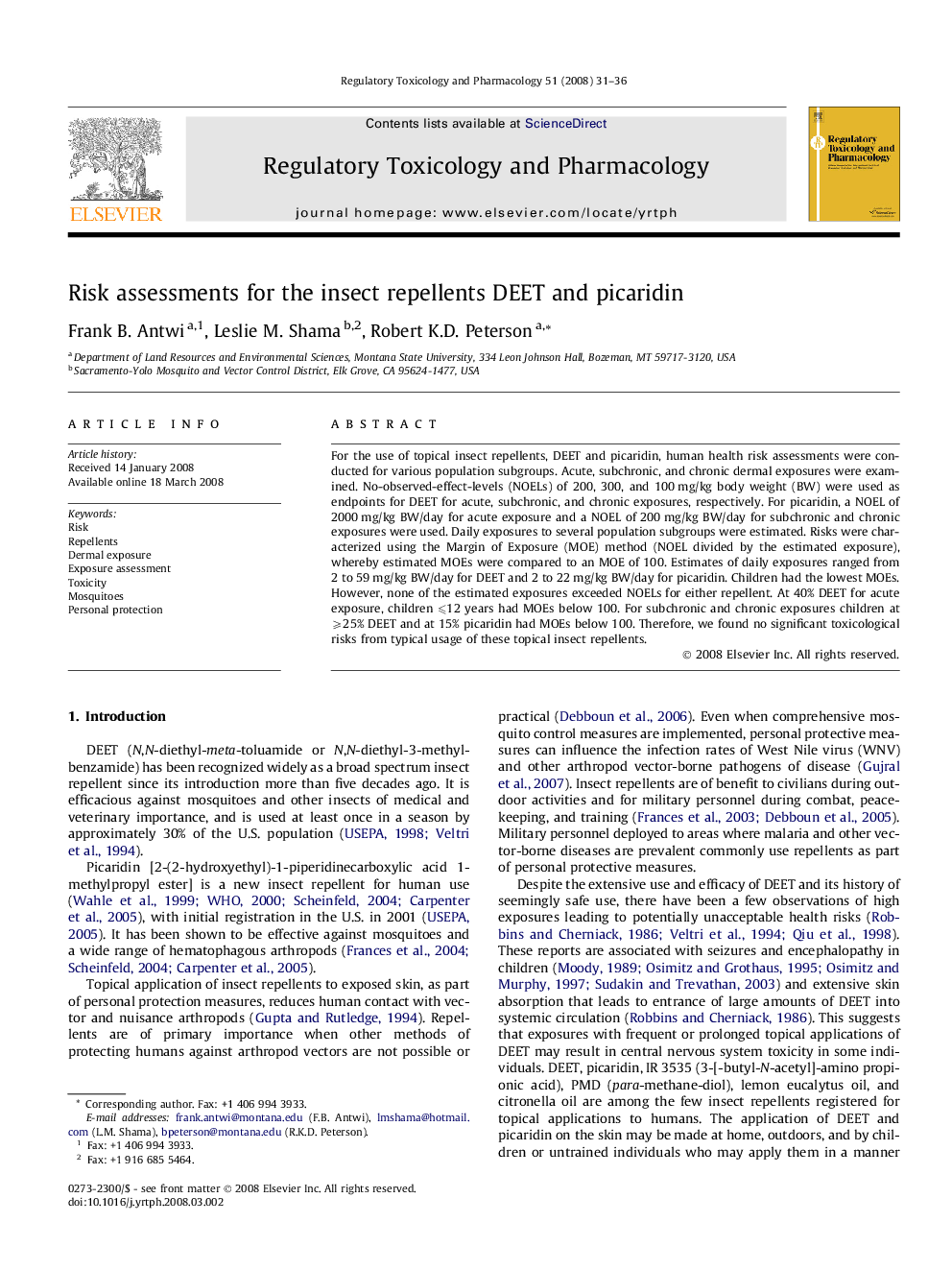| کد مقاله | کد نشریه | سال انتشار | مقاله انگلیسی | نسخه تمام متن |
|---|---|---|---|---|
| 2592714 | 1132042 | 2008 | 6 صفحه PDF | دانلود رایگان |

For the use of topical insect repellents, DEET and picaridin, human health risk assessments were conducted for various population subgroups. Acute, subchronic, and chronic dermal exposures were examined. No-observed-effect-levels (NOELs) of 200, 300, and 100 mg/kg body weight (BW) were used as endpoints for DEET for acute, subchronic, and chronic exposures, respectively. For picaridin, a NOEL of 2000 mg/kg BW/day for acute exposure and a NOEL of 200 mg/kg BW/day for subchronic and chronic exposures were used. Daily exposures to several population subgroups were estimated. Risks were characterized using the Margin of Exposure (MOE) method (NOEL divided by the estimated exposure), whereby estimated MOEs were compared to an MOE of 100. Estimates of daily exposures ranged from 2 to 59 mg/kg BW/day for DEET and 2 to 22 mg/kg BW/day for picaridin. Children had the lowest MOEs. However, none of the estimated exposures exceeded NOELs for either repellent. At 40% DEET for acute exposure, children ⩽12 years had MOEs below 100. For subchronic and chronic exposures children at ⩾25% DEET and at 15% picaridin had MOEs below 100. Therefore, we found no significant toxicological risks from typical usage of these topical insect repellents.
Journal: Regulatory Toxicology and Pharmacology - Volume 51, Issue 1, June 2008, Pages 31–36